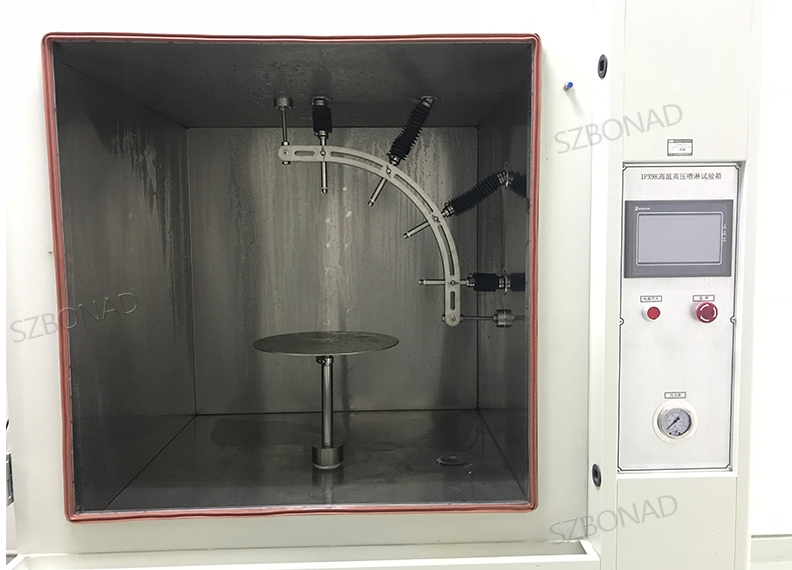
How do you understand ingress protection number of IPX9 AND IPX9K?
IPX9 High-Temperature and High-Pressure Water Jets Tests
The degree of protection that an enclosure offers against invasions is tested through ingress protection testing. Exposing the equipment under test (EUT) to high-pressure and high-temperature water jets is one such set of ingress prevention tests. The test numbers for them are IPX9. The first number, denoted by the letter "X," goes from 0 to 6 and indicates how well a particle is protected. In the event of the ingress protection test for high-pressure and high-temperature water jets, the second number would consistently be a 9. BONAD offers testing of enclosures for various goods by subjecting them to high pressure and temperature water jets for IPX9 and IPX9K, along with other ingress protection testing for dust and water.
The greatest water ingress protection grade currently offered is IPX9K. Even though IPX9K testing was initially created for automotive vehicles, it is now widely used in the consumer product, electronics, and military industries. Both the IPX9 and IPX9K ratings indicate that a product can withstand water jets that are sprayed at high temperatures and pressure, however the testing methods and specifications differ.
In order to assess how well electronic components and product casings protect against liquids and foreign objects, IPx9K uses high-pressure steam cleaning and pressure washing. The impact of degradation on seals, connectors, wires, and mounting equipment is measured using a mixture of heat, water ingress, and chemical detergents. The test technique for the IPX9 rating is defined by IEC 60529, whilst the IPX9K test procedure is defined by ISO 20653.
Below is a brief description of IPX9 testing as detailed in IEC 60529:
-
IPX9 Powerful High Temperature Water Jets
-
Defined as protection against close-range high pressure, high temperature spray downs.
-
The requirement is that the EUT shall experience no harmful effects from the high-pressure and high-temperature water spray.
Testing details are as below:
-
Smaller specimens rotate slowly on a turntable, from 4 specific angles.
-
Larger specimens are mounted upright, no turntable required, and are tested freehand for at least three minutes at distance of 0.15–0.2 m.
-
The test duration is 30 seconds in each of the four angles, for two minutes of total testing.
The request of the water in an IPX9 test:
-
A specific nozzle must be used.
-
The water volume should be 14–16 liters per minute.
-
The water pressure should be 8–10 MPa (80–100 bar) at distance of 0.10–0.15 meters.
-
The water temperature should be 80 °C.
All of the IPX9 IP Code combinations are listed below, along with a brief explanation of each test:
|
IP Rating
|
Degree of Protection Against Solid Foreign Objects
|
Degree of Protection Against Water
|
|
IP09
|
Not Protected
|
High-pressure and temperature water jets
|
|
IP19
|
Solid object >50 mm
|
High-pressure and temperature water jets
|
|
IP29
|
Solid object >12.5 mm
|
High-pressure and temperature water jets
|
|
IP39
|
Solid object>2.5 mm
|
High-pressure and temperature water jets
|
|
IP49
|
Solid object>1 mm
|
High-pressure and temperature water jets
|
|
IP59
|
Dust protected
|
High-pressure and temperature water jets
|
|
IP69
|
Dust tight
|
High-pressure and temperature water jets
|
|

